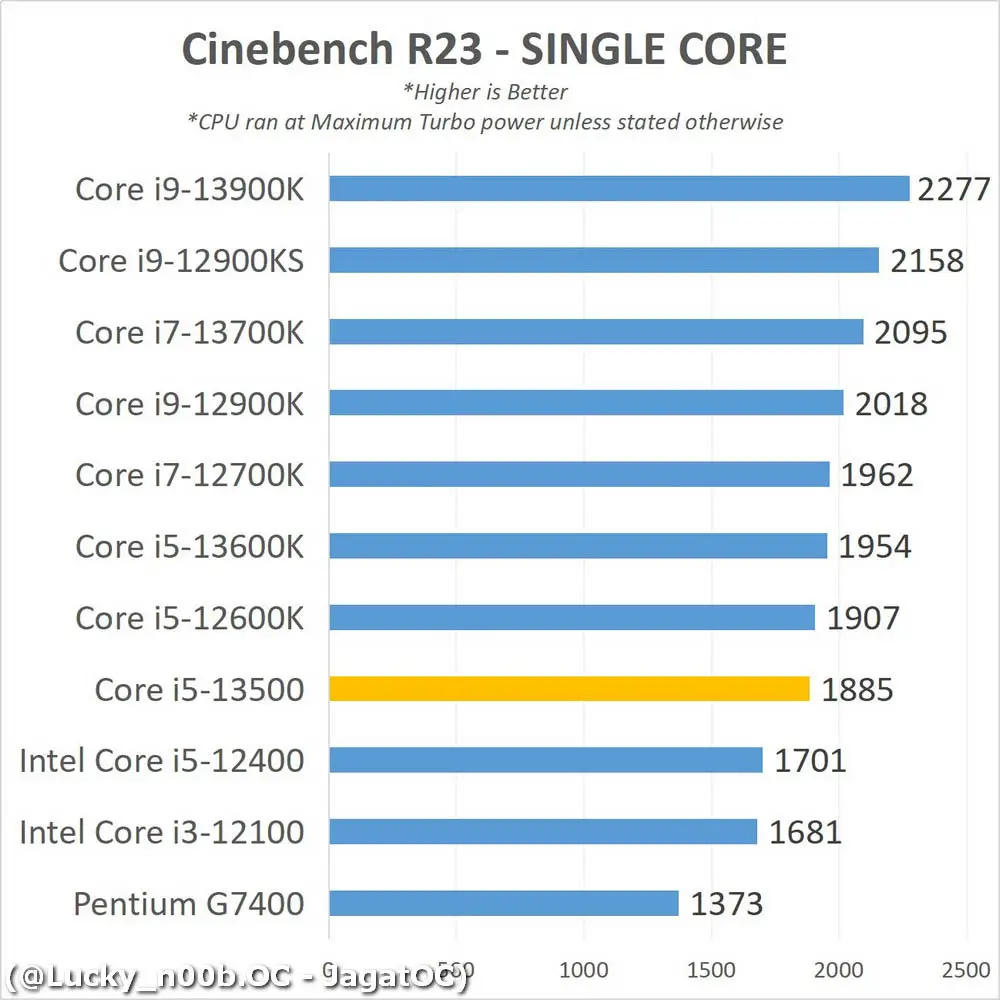Intel Core i5-13500 has a maximum all-core turbo frequency of 4.5GHz
Although before Intel’s Core non-K series processors, the Core i5 will basically have three products, X400, X500, and X600, which basically only have differences in frequency and integrated graphics. However, the difference between the 13th generation Core i5-13400 and Core i5-13500 is still quite large. After all, the latter has 4 more E-Cores, and the L3 cache has also increased from 20MB to 24MB.

Alva Jonathan from JagatOC overclocking team released a simple test of the Intel Core i5-13500. This processor has 6 P-Cores and 8 E-Cores. From the screenshot of CPU-Z, the L2 cache of P-Core is 1.25MB, and the L2 cache of E-Core is 2MB. Although it is recognized as Raptor Lake, such L2 cache capacity is no different from Alder Lake.

By default, its PL1 is 65W, PL2 is 154W, and the maximum single-core turbo frequency of P-Core is 4.8GHz. When maintaining 65W PL1, the P-Core’s full-core turbo frequency is 2.8~2.9GHz, and the E-Core’s is 2.9GHz. If the power consumption is unlocked, the P-Core’s full-core frequency is 4.5GHz, while the E-Core’s is 3.5GHz. Of course, the power of the processor will be greatly increased after unlocking the power consumption, which is not suitable for continuing to use the original radiator.

He also ran the Cinebench R23 test. In terms of single-thread performance, the Intel Core i5-13500 is basically catching up with the Core i5-12600K, which is much higher than the Core i5-12400.

In terms of multi-thread performance, if the 65W PL1 is maintained, the performance of the Core i5-13500 is relatively close to that of the Core i5-12600K. Unlocking the power consumption, its performance will greatly exceed the Core i5-12600K, slightly lower than the Core i7-12700K.





